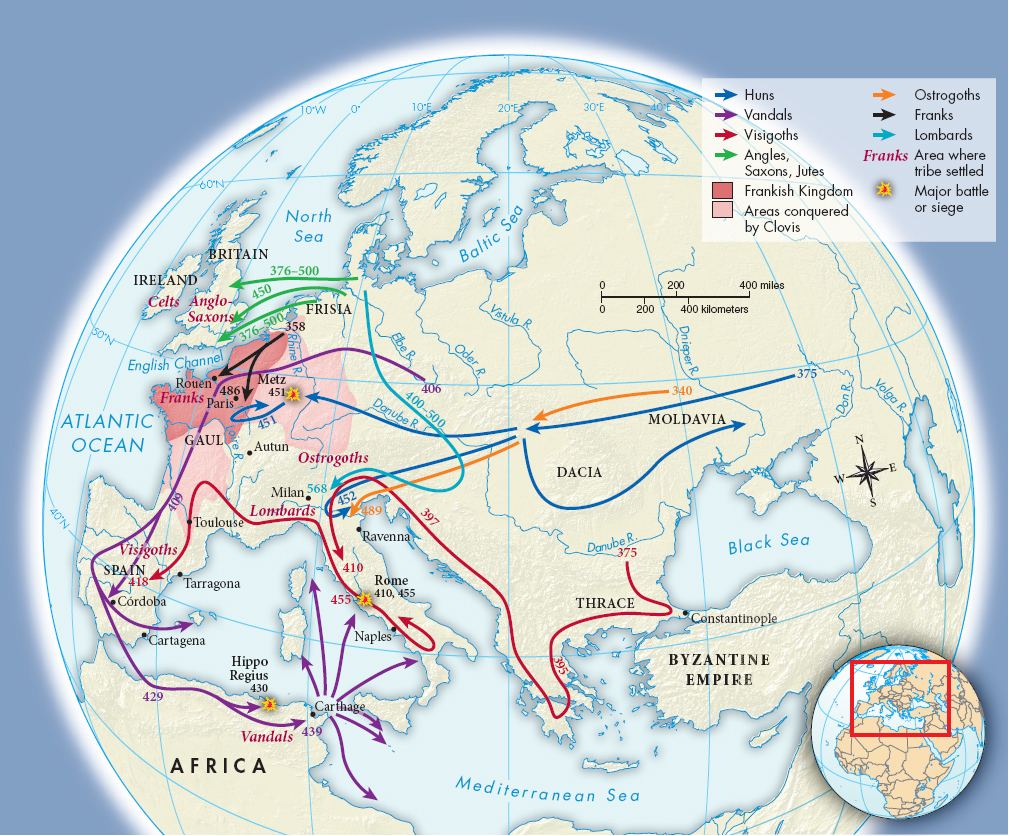Understanding Western Society
Printed Page 193
Chapter Chronology
| > | What were some of the causes and consequences of the barbarian migrations? |

Anglo-Saxon HelmetThis ceremonial bronze helmet from seventh-century England was found inside a ship buried at Sutton Hoo. The nearly 100-foot-long ship was dragged overland before being buried completely. It held one body and many grave goods, including swords, gold buckles, and silver bowls made in Byzantium. The unidentified person who was buried here was clearly wealthy and powerful. (© The Trustees of the British Museum)
MMIGRATING GROUPS THAT THE ROMANS LABELED BARBARIANS had moved southward and eastward off and on since about 100 B.C.E. (see Chapters 5 and 6). As their movements became more organized in the third and fourth centuries C.E., Roman armies sought to defend the Rhine-Danube border of the Roman Empire. But with troop levels low because Italians were increasingly unwilling to serve in the army, generals were forced to recruit barbarians to fill the ranks. By the fourth century, barbarians made up the majority of those fighting both for and against Rome, and climbed higher and higher in the ranks of the Roman military. Toward the end of the fifth century, this barbarian assumption of authority stretched all the way to the top, and the last person with the title of emperor in the Western Roman Empire was deposed by a Gothic general.
Why did the barbarians migrate? In part they were searching for more regular supplies of food, better farmland, and a warmer climate. In part they were pushed by groups living farther eastward, especially by the Huns from Central Asia in the fourth and fifth centuries. Conflicts within and among barbarian groups also led to war and disruption, which motivated groups to move (Map 7.3).

MAP 7.3 The Barbarian Migrations, ca. 340–500 This map shows the migrations of various barbarian groups in late antiquity and can be used to answer the following questions.> MAPPING THE PASTANALYZING THE MAP: The movements of barbarian peoples used to be labeled invasions and are now usually described as migrations. How do the dates on the map support the newer understanding of these movements?
CONNECTIONS: Human migration is caused by a combination of push factors — circumstances that lead people to leave a place — and pull factors — circumstances that attract people to a new location. Based on the information in this and earlier chapters, what push and pull factors might have shaped the migration patterns you see on the map?

